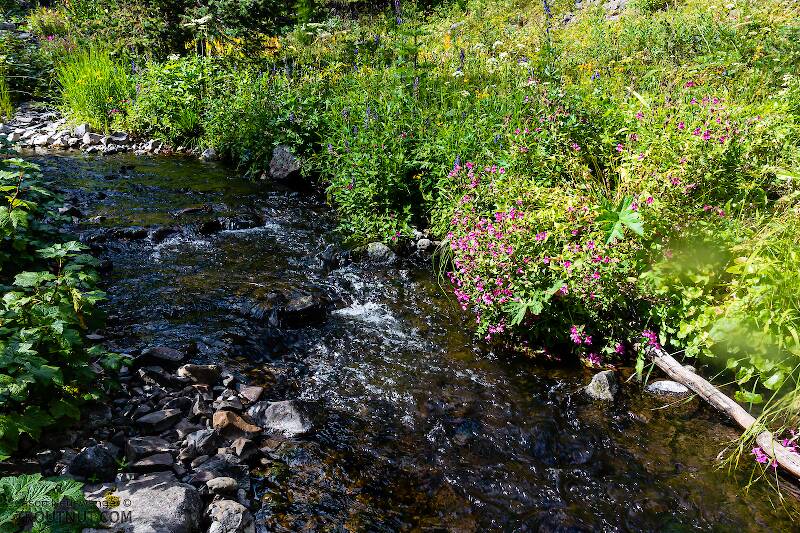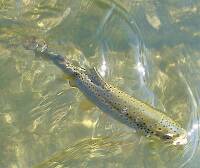
Hex Mayflies
Hexagenia limbata
The famous nocturnal Hex hatch of the Midwest (and a few other lucky locations) stirs to the surface mythically large brown trout that only touch streamers for the rest of the year.
Featured on the forum

Troutnut is a project started in 2003 by salmonid ecologist Jason "Troutnut" Neuswanger to help anglers and
fly tyers unabashedly embrace the entomological side of the sport. Learn more about Troutnut or
support the project for an enhanced experience here.
GoofusBug
Posts: 31
Posts: 31
GoofusBug on Mar 31, 2009March 31st, 2009, 3:21 pm EDT
Hey Wisconsin contingent...
Is there much scud activity on the Kinni? I will be traveling there in June.
Is there much scud activity on the Kinni? I will be traveling there in June.
CharlieSawd on Mar 31, 2009March 31st, 2009, 3:49 pm EDT
Goof,
The Kinni is always scud active!
Check out driftlessflybox.com for information about insect emergences in the region (Jason provided all the photos). I have cataloged some patterns common to the area (including scuds!), and more are to come.
-Charlie
The Kinni is always scud active!
Check out driftlessflybox.com for information about insect emergences in the region (Jason provided all the photos). I have cataloged some patterns common to the area (including scuds!), and more are to come.
-Charlie
Charlie Sawdey
www.driftlessflybox.com
www.driftlessflybox.com
Troutnut on Apr 1, 2009April 1st, 2009, 9:59 am EDT
Yeah, there's a great scud hatch on the Kinni in early to mid-June. I like to fish an emerger when they're drifting along just under the surface starting from around 3:00 am, then switch to dries at dawn to imitate the adults. I find cold, rainy mornings are best, since they take an especially long time to dry their wings and fly away.
Jason Neuswanger, Ph.D.
Troutnut and salmonid ecologist
Troutnut and salmonid ecologist
BGrnFlyfish on Apr 5, 2009April 5th, 2009, 8:38 am EDT
Scuds hatch? I thought they were a type of freshwater shrimp almost... oh and I really like the driftlessflybox site!!!
Seth-Big Green River, WI
GoofusBug
Posts: 31
Posts: 31
GoofusBug on Apr 5, 2009April 5th, 2009, 4:03 pm EDT
The original post, albeit poorly-worded by myself, was a serious one. Let me try again.
Should I be tying up a bunch of scud patterns for my trip to fish the Kinni in June? I'll be fishing both the lower and upper stretches.
Thanks.
Should I be tying up a bunch of scud patterns for my trip to fish the Kinni in June? I'll be fishing both the lower and upper stretches.
Thanks.
Troutnut on Apr 6, 2009April 6th, 2009, 1:58 am EDT
I gave a goofy answer only because Charlie gave a pretty good one first (and it was April 1st). That said, I haven't actually fished the Kinni, but I do know a fertile spring creek like that basically works: scuds are a great searching pattern and work well most of the time, but there's always the possibility you could end up needing to match a mayfly, caddis, or midge hatch instead, so you can't rely only on scuds.
Jason Neuswanger, Ph.D.
Troutnut and salmonid ecologist
Troutnut and salmonid ecologist
CharlieSawd on Apr 6, 2009April 6th, 2009, 6:22 am EDT
Jason is exactly right. In early June, you may potentially need several patterns to be effective. The weather can still vary greatly that time of year here, so pay attention to water temperature rather than air temperature. Certainly have scud patterns, like Jason said, a fantastic prospecting fly in this region. Cary several caddis (larvae thru pupae, along with the adults). Be sure to carry caddis emergers with a green body. There are several caddis hatching at this time, including the black caddis, which can offer some of the best dry fly fishing we have here in the region. Carry the usual mayfly nymph suspects, along with BWO, Sulphur, and Light Hendrickson dry fly patterns. Also look into the pink squirrel, perhaps one of the best prospecting patterns I have used on this river, and others in the region.
Charlie Sawdey
www.driftlessflybox.com
www.driftlessflybox.com
Quick Reply
Related Discussions
Topic
Replies
Last Reply
0
May 6, 2011
by Jtberez
by Jtberez




